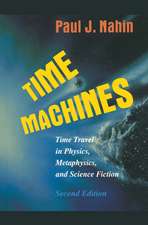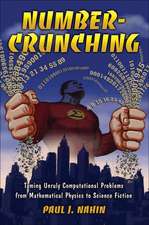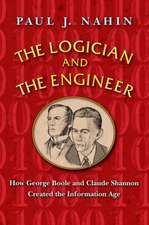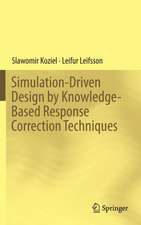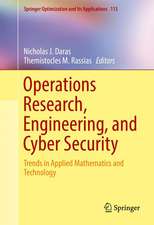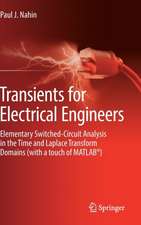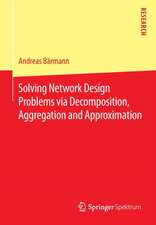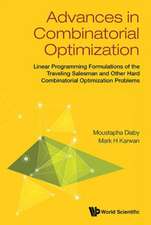When Least Is Best – How Mathematicians Discovered Many Clever Ways to Make Things as Small (or as Large) as Possible: Princeton Science Library
Autor Paul Nahinen Limba Engleză Paperback – 7 iun 2021
What is the best way to photograph a speeding bullet? How can lost hikers find their way out of a forest? Why does light move through glass in the least amount of time possible? When Least Is Best combines the mathematical history of extrema with contemporary examples to answer these intriguing questions and more. Paul Nahin shows how life often works at the extremes-with values becoming as small (or as large) as possible-and he considers how mathematicians over the centuries, including Descartes, Fermat, and Kepler, have grappled with these problems of minima and maxima. Throughout, Nahin examines entertaining conundrums, such as how to build the shortest bridge possible between two towns, how to vary speed during a race, and how to make the perfect basketball shot. Moving from medieval writings and modern calculus to the field of optimization, the engaging and witty explorations of When Least Is Best will delight math enthusiasts everywhere.
| Toate formatele și edițiile | Preț | Express |
|---|---|---|
| Paperback (2) | 106.40 lei 3-5 săpt. | |
| Princeton University Press – 7 iun 2021 | 106.40 lei 3-5 săpt. | |
| Princeton University Press – 2 iul 2007 | 194.96 lei 6-8 săpt. |
Din seria Princeton Science Library
-
 Preț: 70.31 lei
Preț: 70.31 lei -
 Preț: 137.34 lei
Preț: 137.34 lei -
 Preț: 85.70 lei
Preț: 85.70 lei -
 Preț: 95.46 lei
Preț: 95.46 lei -
 Preț: 118.58 lei
Preț: 118.58 lei -
 Preț: 104.74 lei
Preț: 104.74 lei -
 Preț: 97.50 lei
Preț: 97.50 lei -
 Preț: 84.32 lei
Preț: 84.32 lei -
 Preț: 122.26 lei
Preț: 122.26 lei -
 Preț: 108.03 lei
Preț: 108.03 lei -
 Preț: 151.14 lei
Preț: 151.14 lei -
 Preț: 96.46 lei
Preț: 96.46 lei -
 Preț: 103.09 lei
Preț: 103.09 lei -
 Preț: 137.34 lei
Preț: 137.34 lei -
 Preț: 104.35 lei
Preț: 104.35 lei -
 Preț: 105.71 lei
Preț: 105.71 lei -
 Preț: 104.54 lei
Preț: 104.54 lei -
 Preț: 124.31 lei
Preț: 124.31 lei -
 Preț: 102.86 lei
Preț: 102.86 lei -
 Preț: 95.46 lei
Preț: 95.46 lei -
 Preț: 107.00 lei
Preț: 107.00 lei -
 Preț: 95.46 lei
Preț: 95.46 lei -
 Preț: 103.72 lei
Preț: 103.72 lei -
 Preț: 104.95 lei
Preț: 104.95 lei -
 Preț: 111.53 lei
Preț: 111.53 lei -
 Preț: 129.50 lei
Preț: 129.50 lei -
 Preț: 95.64 lei
Preț: 95.64 lei -
 Preț: 115.27 lei
Preț: 115.27 lei -
 Preț: 104.08 lei
Preț: 104.08 lei -
 Preț: 107.00 lei
Preț: 107.00 lei -
 Preț: 130.12 lei
Preț: 130.12 lei -
 Preț: 96.46 lei
Preț: 96.46 lei -
 Preț: 87.63 lei
Preț: 87.63 lei -
 Preț: 104.95 lei
Preț: 104.95 lei -
 Preț: 108.03 lei
Preț: 108.03 lei -
 Preț: 108.03 lei
Preț: 108.03 lei -
 Preț: 107.00 lei
Preț: 107.00 lei -
 Preț: 143.30 lei
Preț: 143.30 lei -
 Preț: 118.58 lei
Preț: 118.58 lei -
 Preț: 116.49 lei
Preț: 116.49 lei -
 Preț: 92.77 lei
Preț: 92.77 lei -
 Preț: 111.14 lei
Preț: 111.14 lei -
 Preț: 116.15 lei
Preț: 116.15 lei -
 Preț: 113.62 lei
Preț: 113.62 lei -
 Preț: 98.11 lei
Preț: 98.11 lei -
 Preț: 98.54 lei
Preț: 98.54 lei -
 Preț: 101.65 lei
Preț: 101.65 lei -
 Preț: 92.77 lei
Preț: 92.77 lei
Preț: 106.40 lei
Nou
Puncte Express: 160
Preț estimativ în valută:
20.36€ • 21.26$ • 16.85£
20.36€ • 21.26$ • 16.85£
Carte disponibilă
Livrare economică 14-28 martie
Preluare comenzi: 021 569.72.76
Specificații
ISBN-13: 9780691218762
ISBN-10: 0691218765
Pagini: 406
Dimensiuni: 140 x 216 x 22 mm
Greutate: 0.36 kg
Editura: Princeton University Press
Seria Princeton Science Library
ISBN-10: 0691218765
Pagini: 406
Dimensiuni: 140 x 216 x 22 mm
Greutate: 0.36 kg
Editura: Princeton University Press
Seria Princeton Science Library
Notă biografică
Paul J. Nahin is the author of many popular math books, including How to Fall Slower Than Gravity and Hot Molecules, Cold Electrons (both Princeton). He is professor emeritus of electrical engineering at the University of New Hampshire.


